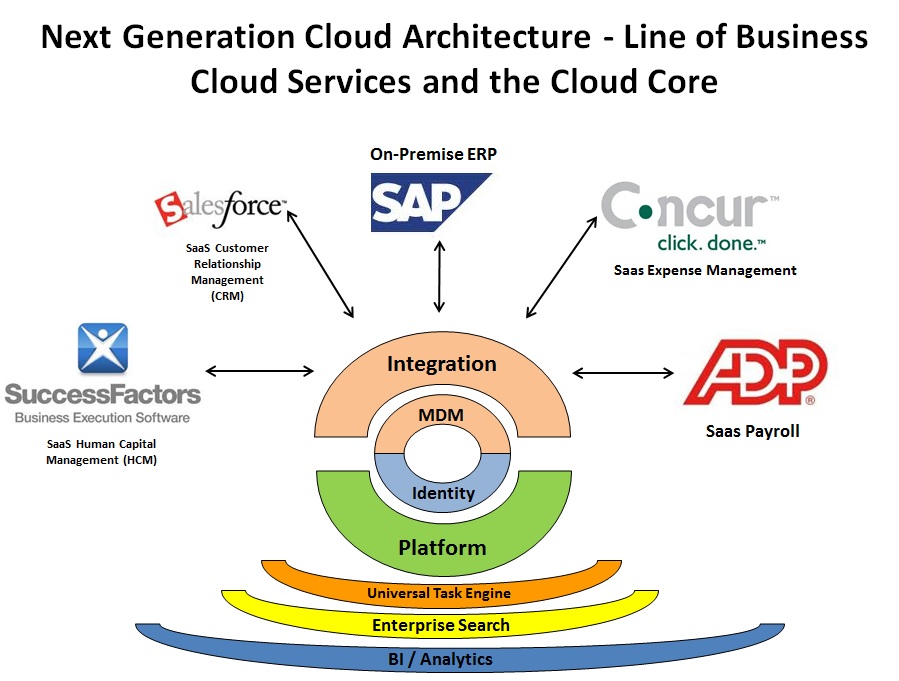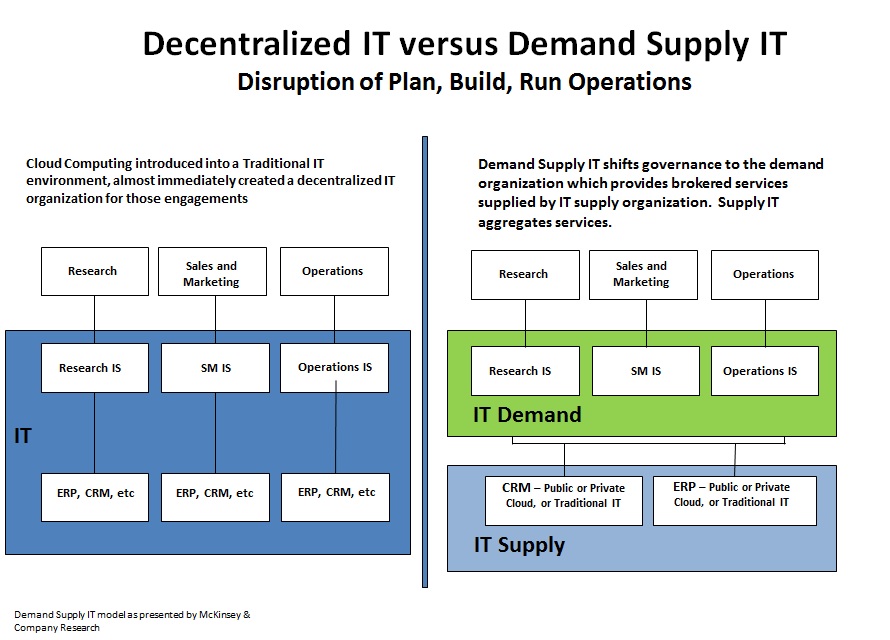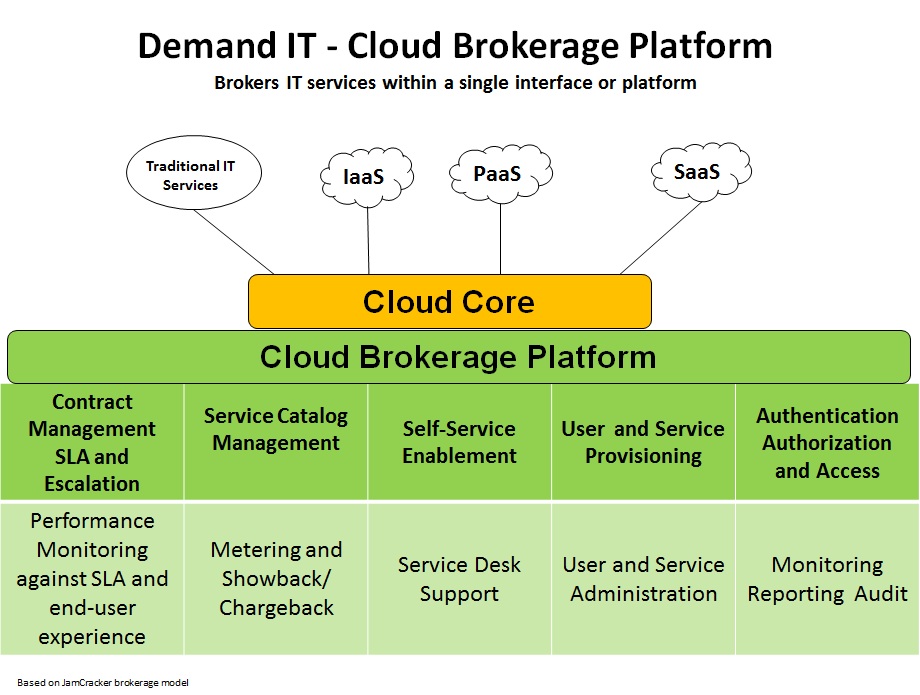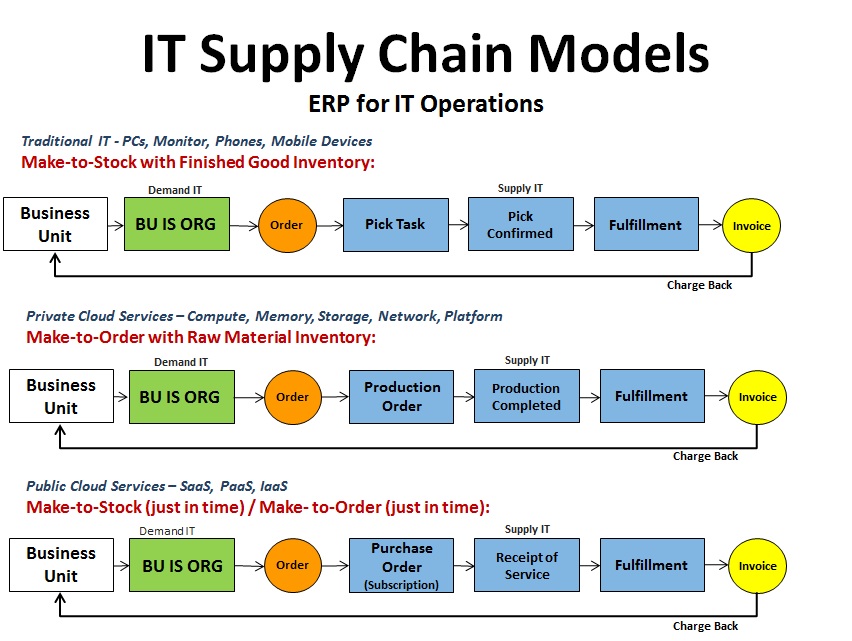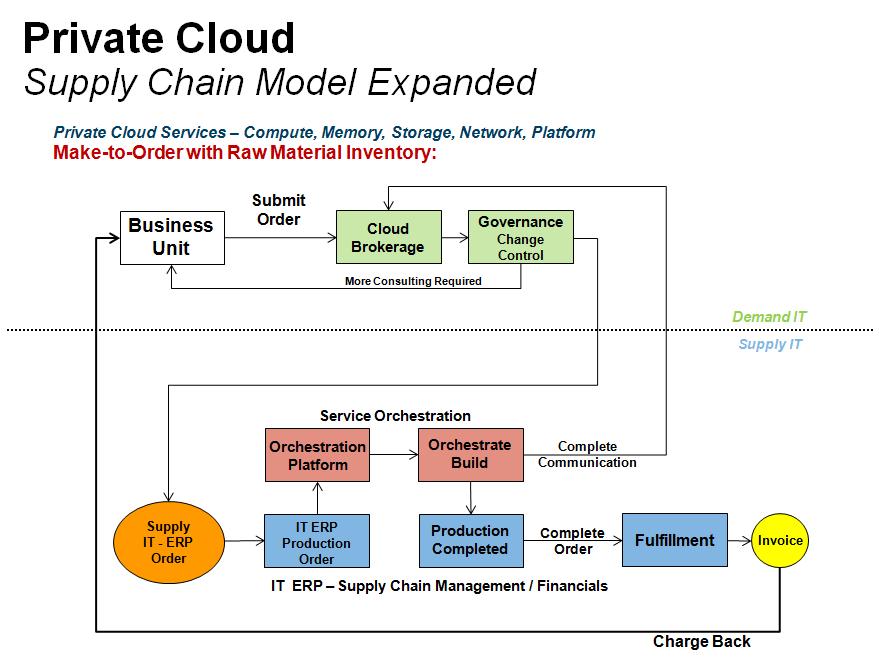The Enterprise IT organization is about to transform, into a services organization. Not by its choice, but because the business is forcing its hand. Business units are engaging cloud services with or without IT’s involvement. The decision making power has shifted from IT to the business. IT organizations will have to evolve their operations to adapt to this new world. With so much discussion about the cloud, there has been very little in the way of providing a framework of how to orient your IT organizations to become the service organization that the business unit will prefer, versus them dealing direct with the cloud providers. How to get from a traditional IT model to services organization model deserves its attention from every single enterprise regardless of industry. This will be a discussion about how cloud computing is impacting organizational behavior, future architecture and what operational infrastructures are required for the successful transformation of Enterprise IT.
The Elephant in the Room
To understand what has changed, we have to follow the money. Cloud computing services have created a consumption economy. For a long time you would hear about how Cloud Computing is simply a choice between OPEX and CAPEX. I always found this argument dismissive of the true value proposition cloud computing was providing. While it may not capture the essence of cloud computing’s value. It has certainly dictated new realities of who is in charge of IT spend. IT typically has the capital dollar budgets but large OPEX budgets live within the business units. This is the piece of data that has been missed by many and the repercussions are many.
In a Plan, Build, Run Traditional IT organization, the assumption is that 100% of the demand for services will go to the IT department. Assuming all demand for IT services comes to the IT department, the IT department can begin to plan. The “Plan” constitutes understanding business objectives and working through enterprise architecture and risk management to formulate IT strategies. Then organize IT budgets (capital and expense) to fund the execution of the roadmap. The “Build” phase is really where the project management lives and where the PMO will implement the projects in support of the roadmap. Once the projects are completed then the new IT infrastructures will be management by operations. The “Run” phase is the operations and where ITIL frameworks have been adopted. Now this is an over-generalization of Plan, Build, Run, but I want you to see the waterfall of activity to deliver services in a traditional IT organization. To function properly 100% of IT demand needs to go to the IT department. Without that complete demand, IT governance, capacity planning and budgets are very difficult to predict or measure.
Once cloud services became available, capital budgets in the Plan were no longer sought out. Instead cloud providers sold their services directly to the business unit, and the business unit paid for it using their own OPEX budget. This singular event which has now occurred within in almost every enterprise is the mark of the end of Traditional IT and the Plan, Build, Run operating model. This is a very significant change and one that needs to be recognized by CIOs everywhere.
When a business uses cloud services they are charged based on usage. For many business units, they now can fund their own projects and know what the cost of managing ongoing operations is. When working with the IT organization, they are not provided a common consumption model. The lack of agility and visibility over their operations has pushed them into the arms of the cloud provider. In turn, the cloud provider has with open arms provided an OPEX model. Cloud providers are no longer interested in convincing the CIO or anyone in the IT department to select their services. The cloud providers are selling Line of Business solutions directly to the business. This has created the decentralization of IT operations. This instant decentralization of IT service delivery, will force every single enterprise to establish a new model of IT operations.
Cloud Core Architecture
If you follow the logic, you quickly realize that the narrative of what services are used in the Enterprise is no longer in the hands of IT. This creates a new challenge architecturally. IT is no longer in the business of saying “no” to the business when the business wants to bring on a new service. The IT organization is no longer being asked and as a result they are completely unaware to the degree this is happening. So how should the IT department respond?
IT will have to create an architecture that will allow the business to select their Line of Business solutions, and yet provide a method to integrate, manage master data, provide identity management and provisioning capabilities, allow for the ability to search for data across any SaaS services, provide a development platform without vendor lock-in, be able to derive analytics across all transactional and master data produced, and guide users by issuing tasks when work is required to fulfill processes across the various systems. In total, I am referring to this set of services as the “Cloud Core”. This represents the necessary architecture to support this new world order.
Demand Supply IT
To remedy the decentralization of IT, you have to understand what decentralization has done. The benefits and the systemic problems created. For the business unit, they are finding solutions and executing with agility. In the process each business unit within an Enterprise may be working with the same cloud provider engaging their own contracts and instances of the service. This has created disparity in cost for service within the same organization and silos of data. It also produced different SLA’s with the same vendor and without contract standards. In most cases they are just engaging in what I would call “Credit Card Contracts”.
Demand Supply IT model for operations is not new. McKinsey & Company talked about this in 2006. Whether they knew it or not, they articulated a model of operations which in today’s Cloud Computing era represents the go forward strategy.
There are in essence two IT organizations. One which interfaces with the business and manages their demand for IT services and another which provides a supply of IT service sourced internally and/or externally.
The demand organization generally described as the client facing IT department which are oriented by function or site, require a platform where they can select services from a catalog, self-provision, and have visibility into the use of the services. Gartner has appropriately called this the “Cloud Brokerage Platform”. In a sense it’s the CRM of IT Operations. As a result, the Demand IT organization is now the new home for IT governance. They will be selecting services from the Supply IT catalog (internal and external services). This interface will need to provide the ability to administer the environment enough to initiate and track the fulfillment of service delivery and ongoing management. Below is a diagram demonstrating the attributes of the Cloud Brokerage Platform.
There are many emerging Cloud Brokerage Platforms most are focused around Infrastructure Private Clouds or IaaS service management. Eventually, they will move up the stack. So far the thinking is that they will integrate directly with Orchestration platforms but this will not address the need for financial chargeback or address the planning intelligence that will be required for long term operational management.
If the elephant in the room was that fact that business units are using their OPEX dollars to buy their own cloud services, then IT needs to change their entire financial model to a chargeback structure. I used to think that the chargeback IT organizations were going to be the most badly impacted by the advent of cloud services. I was wrong. The traditional IT organization which relies on its large capital budgets as a tool for governance are the ones who are actually the most behind and will experience the most significant transformational challenge. In either case, cloud is presenting the need for Enterprise IT organizations to chargeback their services. In doing so, we can now apple for apple compare with a common set of data classification and KPIs, whether internally deployed services or externally hosted services are a better fit for an Enterprise.
As I thought about this it became clear to me that inventing a set of workflows to manage the business unit demand against resources provided by the Supply IT organization, did not make much sense. But none the less, I began mapping those processes and then it became very clear. It is not appropriate to create a new tool; IT needs to deploy an ERP system to manage its own operations. The Brokerage Platform is the CRM which should be in the hands of the Demand IT organization but the Supply Organization needs comprehensive supply chain capabilities and of course financials to manage charge back. As I began to apply manufacturing models of operations against the needs to deliver cloud services, it all started to fit.
As you look at the processes for delivering IT services that are internally sourced, or externally hosted, you will find parallels with manufacturing patterns. Make-to-stock, make-to-order, and just in time supply chains all apply. Instead of working with MES systems for production execution, we will be working with Orchestration platforms.
Manufacturing ERP vendors need to recognize that there is a new vertical in town, and it’s the “Operations of IT” in the cloud computing era. This could prove to be one of the most complex supply chains, but the rewards are plenty because every Enterprise has one. I hope and expect there will be a tremendous amount of innovation in this space.
Final Thoughts
If the IT organization wants to remain relevant, it needs to provide additional value for the business when it delivers cloud solutions. In turn, the IT organization needs to be a trusted and preferred partner to engage cloud or any other IT service.
Financial operations for IT will need to migrate to a chargeback model to the business. This will allow for true cost comparisons and evaluations of whether there is value to take a service to the public cloud or keep the service internal. This will provide a common financial model for all services. This will also shift more of the budget to the business. However, since the IT department will be charging back for all services, it will be less of an issue. The trick is that if the business is now going to make cloud service decisions, they need to also bear the costs related to that decision. This will provide all the necessary tools to successfully move governance operations to the Demand organization.
The operational model of Plan, Build, and Run no longer represents a working model with the inclusion of Cloud services. Therefore the IT organization will need to transform organizationally and architecturally to properly provide services back to the business. Mark Settle, the CIO of BMC Software is a very recent discovery for me, and he describes the change as:
- Planning will be replaced by Brokering Cloud Services
- Build will be replaced by Integration of Cloud Services into the company’s business systems portfolio
- Run will be replaced by Orchestration of services to manage continuity of service delivery.
If you embrace this model and walk through the transformational change that the IT organization will go through, especially in relationship to the business, you will find a new paradigm awaits all of us in IT. I will discuss this further in a future post.
(3172 Views)


